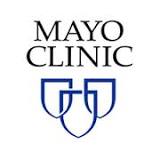Effects of ROSE-010 on GI Transit in Constipation Predominant Irritable Bowel Syndrome (C-IBS) Patients
| Status: | Archived |
|---|---|
| Conditions: | Constipation, Irritable Bowel Syndrome (IBS) |
| Therapuetic Areas: | Gastroenterology |
| Healthy: | No |
| Age Range: | Any |
| Updated: | 7/1/2011 |
| Start Date: | January 2010 |
| End Date: | March 2012 |
Effect of ROSE-010 on Gastrointestinal Motor Functions in Female Patients With Constipation Predominant Irritable Bowel Syndrome (C-IBS)
This is a single-center, randomized, parallel group, double-blind, placebo-controlled, dose
response, pharmacodynamic and pharmacokinetic study evaluating the effects of ROSE-010 on
gastric, intestinal and colonic transit and gastric volumes in female patients with C- IBS.
Methodology
Female patients with C-IBS will be screened for eligibility and informed about the study at
the initial screening visit Visit 1. Within two weeks of Visit 1, eligible patients will be
randomized to study medication, either 30 mcg, 100 mcg or 300 mcg ROSE-010 or placebo
administered via abdominal s.c injection for a total of four days, three consecutive days
during transit scintigraphy and once prior to SPECT imaging. The allocation to treatment
group will be concealed.
Study medication will be administered at the Charlton 7 Clinical Research Unit (CRU) at
Visits 2, 3, and 4, the days of scintigraphic assessment of gastric, small bowel and colonic
transit of solids performed over a 48 hour period.
Within two to seven days of Visit 4, patients will be instructed to return to the Charlton 7
CRU for administration of a final injection of study medication followed by SPECT gastric
accommodation measurements (Visit 5). Within seven to ten days of Visit 5, patients will
return for Visit 6, final safety monitoring and an exit interview with study staff.
Investigational product, dosage and mode of administration
Patients will receive placebo or 30 mcg, 100 mcg or 300 mcg ROSE-010 administered s.c. in
the abdomen once on Visit 2, immediately before the standardized breakfast meal, fifteen
minutes before the first camera image is obtained. Study medication will be administered
fifteen minutes before camera images obtained on Visits 3 and 4. Study medication will be
administered immediately after the first fasting scan is obtained and before the second
fasting scan during SPECT at Visit 5. Study medication will be administered at Charlton 7
CRU by CRU nurses.
Duration of treatment
ROSE-010 or matching placebo will be administered via abdominal s.c injection once daily for
three consecutive days and one final day two to seven days later, over a ten-day interval.
Duration of patients involvement in the study
Each patient will attend six visits at the clinic during a period of two to four weeks.
Efficacy assessments
1. Scintigraphic gastrointestinal and colonic transit
2. 99mTc SPECT measurement of gastric volumes
3. Assessment of stool frequency and consistency made by the patient using the Bowel
Pattern Diary
Safety assessments
The following safety assessments will be performed:
1. Laboratory safety tests, including a complete blood count (CBC), a comprehensive
metabolic panel (CMP), and urinalysis (UA) at Visit 1 (study entry) and Visit 6 (study
exit)
2. A physical examination by a study physician at Visit 1
3. Weight and vital signs (including temperature, pulse, blood pressure and respiration
rate) at every visit
4. Urine pregnancy tests performed at Visit 1 and within 48 hours prior to receipt of
radiation at Visit 2 transit test and Visit 5 SPECT test
5. Interview for concomitant medications and adverse events at every visit
Statistical methods
An analysis of covariance (ANCOVA) will be used to compare transit parameters and gastric
volumes among the treatment groups. If necessary a suitable transformation for potential
skewness in the distributions of measured volumes may be used (e.g., ANCOVA on ranks or log
volumes). If ANCOVA shows a p value less than or equal to 0.10, then both the 100 mcg and
300 mcg doses will be compared to placebo (p value less than or equal to 0.25). Dunnett's
Test will be used to compare each dose group with placebo. Since each of the primary
endpoints assesses a separate hypothesis regarding the effects of ROSE-010, no adjustment in
the alpha level for testing multiple types of endpoints is anticipated, and a two-sided
significance level of 0.05 will be used in each ANCOVA model.
Analysis data sets
The primary analyses will follow the intent to treat (ITT) paradigm with all patients
randomized included in the analyses. Those patients with missing response values will have
their missing values imputed via the overall (patients with non-missing data) mean and a
corresponding adjustment in the ANCOVA residual error variance degrees of freedom
(subtracting one for each missing value imputed). Safety data will be presented for all
patients receiving investigational product.
We found this trial at
1
site
Mayo Clinic College of Medicine Mayo Medical School enrolls a select class of 50 medical...
Click here to add this to my saved trials
